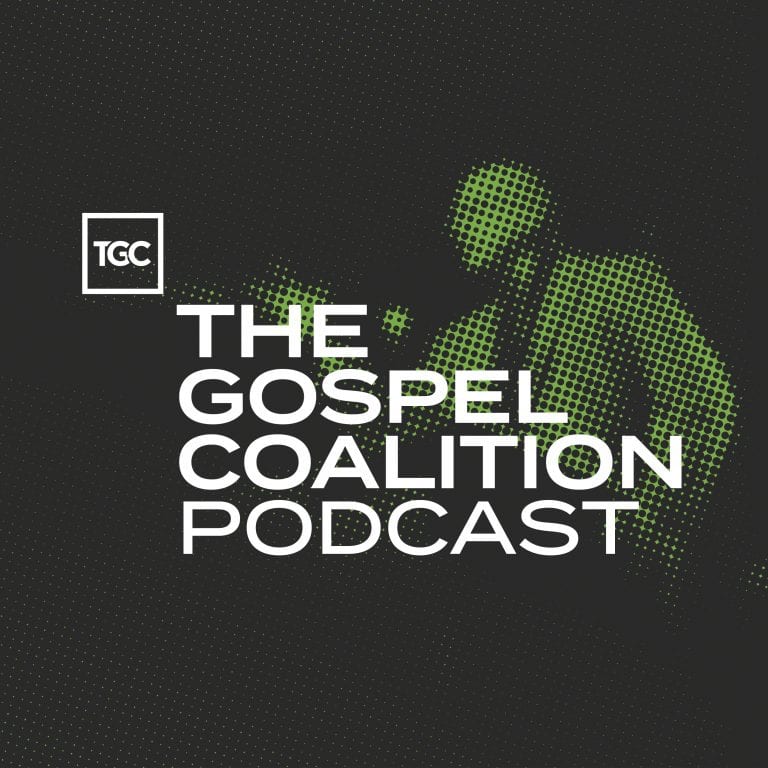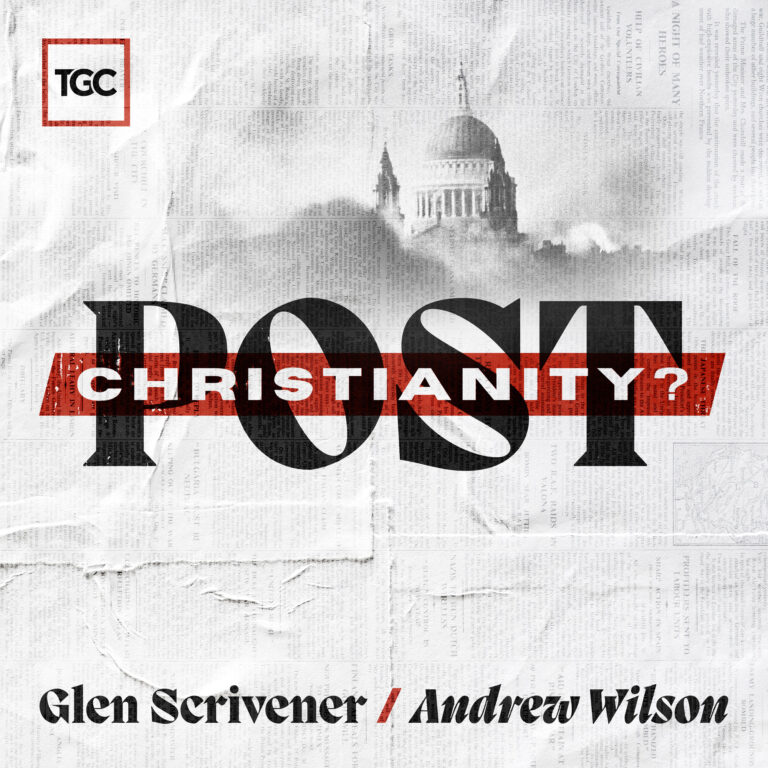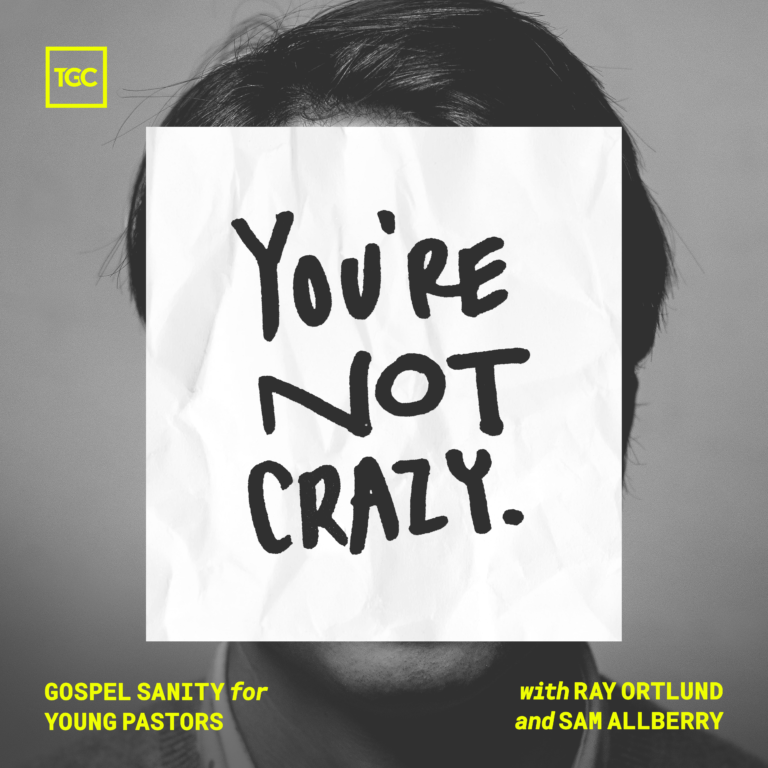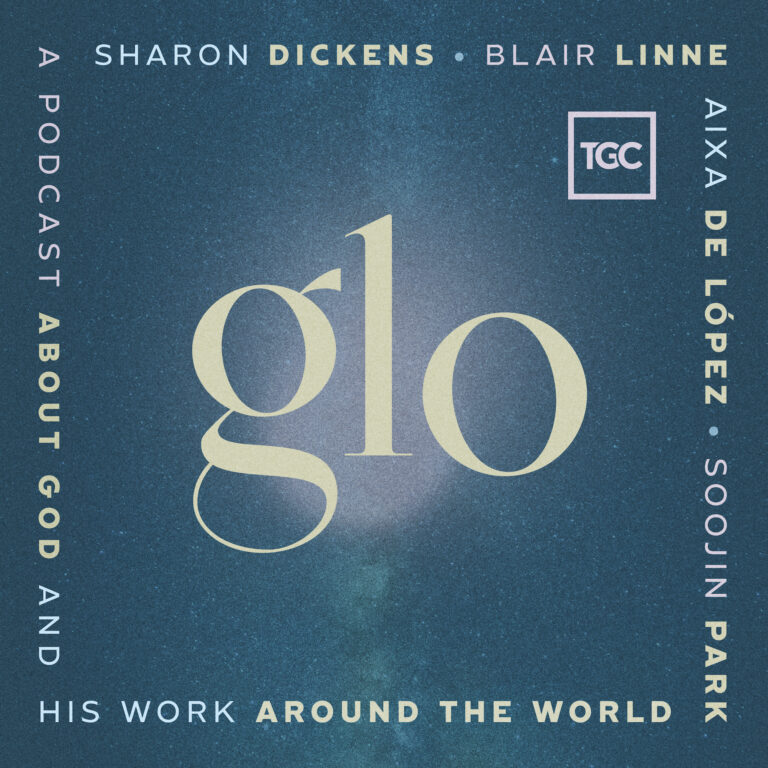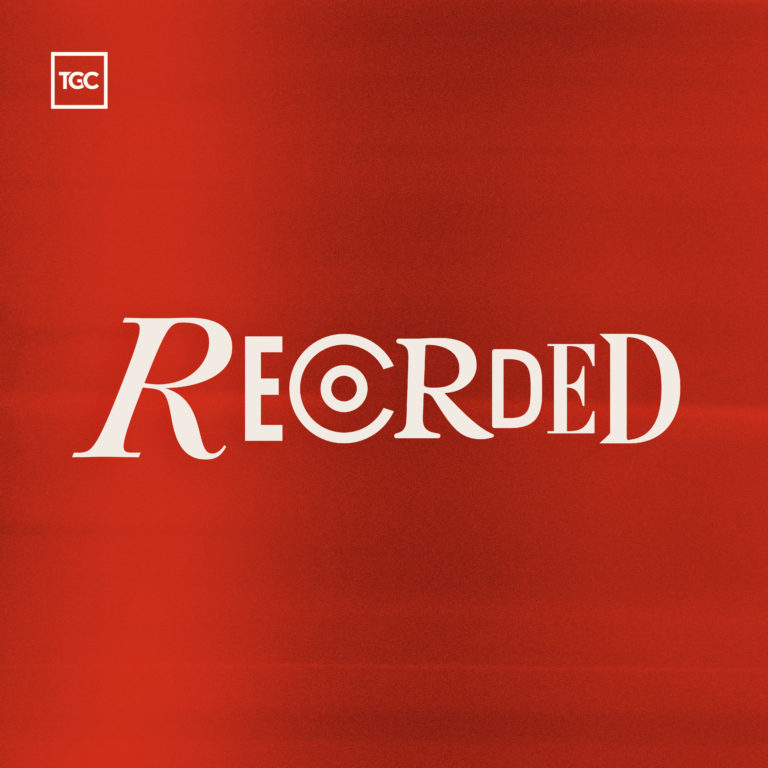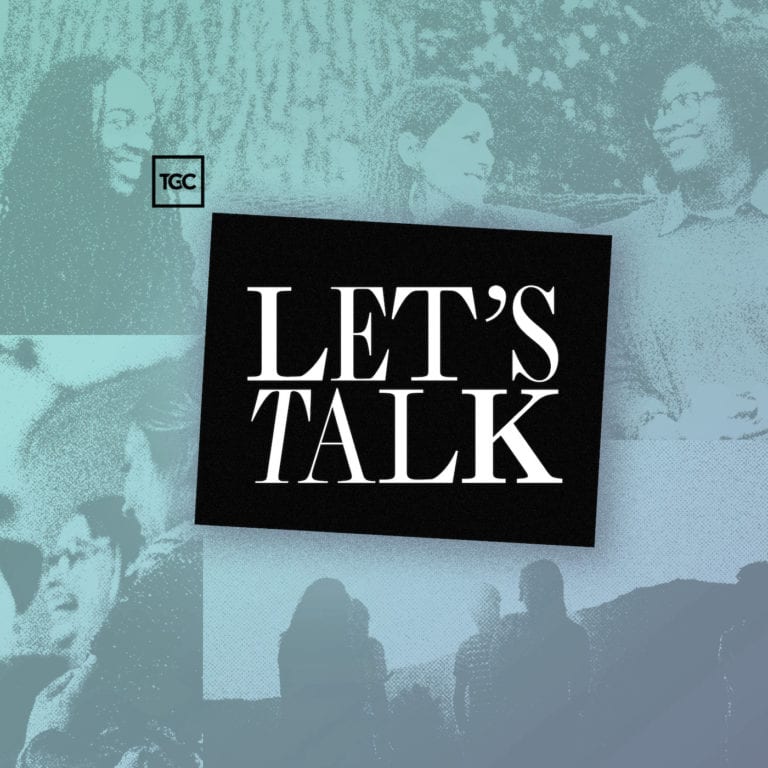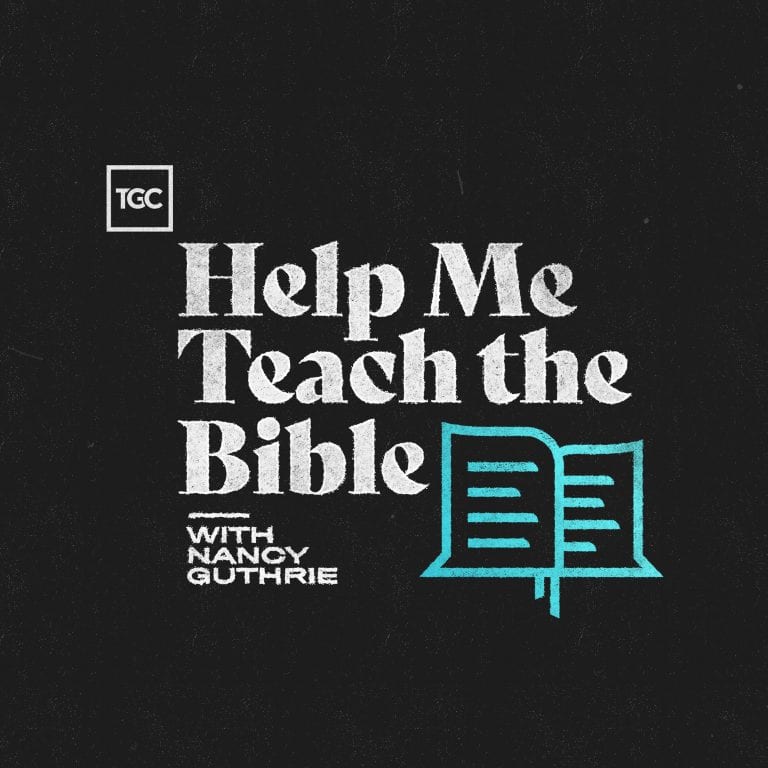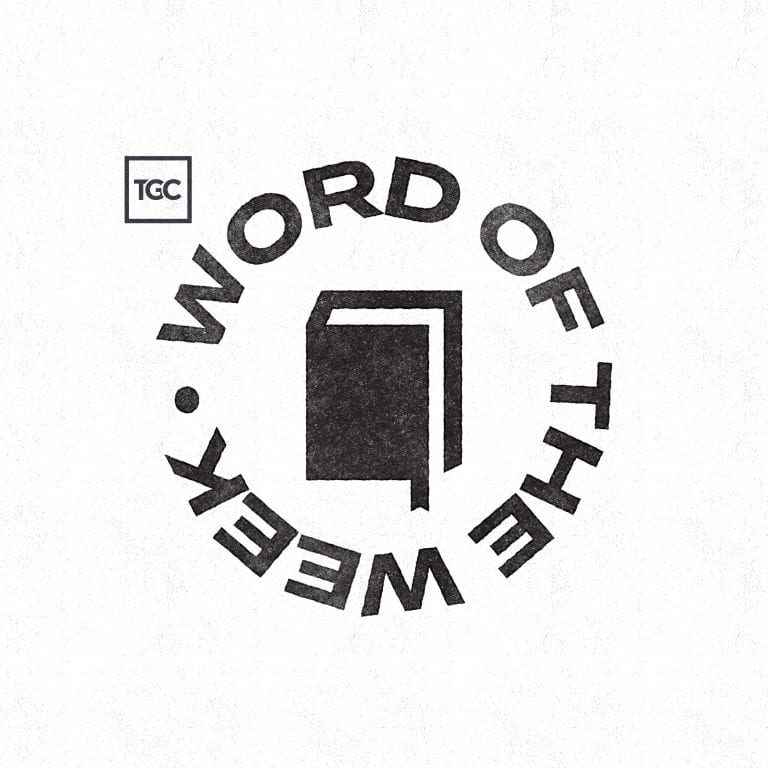“In the middle of our relentless digging into God’s Word together, we absolutely do need to stop regularly and talk about gender-related issues. We need to understand and be able to articulate clearly what we believe about these things and why, according to God’s Word—not as a system of rules that we ascribe to, not as a grid through which we see everything else, but as a fundamental affirmation of God’s goodness to the human beings he created. As the culture around us changes rapidly—so rapidly, in fact, it’s hard to keep track of—we believers have a huge opportunity not only to teach well the young ones growing up among us, but also to bear witness before a world that desperately needs to know the goodness of our Redeemer. And that goodness shines forth powerfully from his good creation of his image-bearers as male and female.” — Kathleen Nielson
Date: June 15, 2018
Event: TGC 2019 National Conference, Indianapolis, Indiana
Listen to this episode of The Gospel Coalition Podcast.
Find more audio and video from the 2018 Women’s Conference on the conference media page.
Transcript
The following is an uncorrected transcript generated by a transcription service. Before quoting in print, please check the corresponding audio for accuracy.
I’ve always been of the opinion and, in fact, I still am of the opinion that the most important way females grow into godly women is by hearing and following the word of God, book by book, and loving the savior whom that word lights up from beginning to end. And topics find their places within the word as we study the word. For a long time, I kind of stayed away from this topic as a separate topic, perhaps partly in reaction to quite a concentrated focus on this topic in the world of women. But you know, in the middle of our relentless digging into God’s word together, we absolutely do need to stop regularly and talk about gender-related issues. Understand that better and better. We need to understand and to be able to articulate clearly what we believe about these things and why, according to God’s word and not as a system of rules that we ascribe to, not as a grid through which we see everything else, but as fundamental affirmation of God’s goodness to the human beings He created. As the culture around us changes rapidly, in fact, so rapidly, it’s hard to keep track of, we believers have a huge opportunity not only to teach well the young ones growing up among us, but also to bear witness before a world that desperately needs to know the goodness of our Redeemer, and that goodness shines forth powerfully from His good creation of His image-bearers as male and female. How we women and men in the church regard ourselves as women and men and how we treat one another as women and men has untold potential to spread the life-giving aroma of our savior to the people around us. It also has untold potential to spread ugliness and harm. We need to take utmost care with this topic that treats the most fundamental stuff of how we are created as human beings.
Oh, you don’t need to take her out, she’s beautiful. Just leave her. We like those sounds. We love those sounds.
Okay. So you know the stereotypes people have regarding not just Christians, but Christians who dare to embrace that title of complementarianism. Now, I do not like labels, but I do use this word, complementarian, from time to time because it’s generally understood by people like those at this conference, to affirm the Bible’s teaching that God created male and female alike in His image, equal in value, equally call to faith and redemption in Christ, and also distinct in roles in both marriage and the church and in those areas, the Bible teaches male headship based in the very order of creation. That’s little nutshell summary there. We know that the world, in general, does not view the Bible’s views about women as beautiful. Louder and louder voices are telling us that biblical teachings on these matters are either utter foolishness or just plain cruel abuse. We’re hearing more and more of that. A writer for a mainline Christian publication recently contacted me asking if I would contribute to an article she was writing on gender practices in the church. and she wanted short answers to two questions. Here are her two questions. Number one, what do you find most challenging about the complementarian church context? And number two, have you felt sidelined in your church as a complementarian? What revealing questions. What implicit assumptions those questions hold. Consider, for example, nobody would ask, what do you find most challenging about vacations in the South of France? Or, of all the painful hardships involved in eating dark chocolate, what is the very worst one? You know, those journalist’s questions to me assumed that this thing called complementarianism, such an awkward word to say, is a painful thing. You know, a thing, some women, somehow, at best survive
Here’s what we’re going to do together in this short time. We’re going to address two questions relating to the topic of women and God. The first is a larger, more general question, and it’s this. How can we put equal and complementary together? The second question is more specific and it’s this. How can we connect our female bodies and our faith? Now, these sound like two very different questions, but, in fact, we will answer them in quite similar ways,and we’ll just scratch the surface. But I hope this might help us all on to study, and pray further, and to develop patterns of biblical thinking and questioning more and more. The thing about this topic of women is that when we tackle it biblically, we find it’s really not all about women. It’s about the gospel. It’s about the Lord Jesus, and it has to start with listening carefully to his word. So here’s question number one. How can we put equal and complementary together? Or rephrased. Come on, can you really put equal and complementary together? The answer I’m suggesting is basically this, we understand how equality and complementarity go together by seeing them together at each point of the biblical storyline in creation, of course, but also in the fall, in redemption, and in the restoration to come. You know, we often make the subject of gender kind of like a pop up in a children’s storybook. It just makes an appearance here and there. Let’s see what happens when we follow the trajectory of gender through the storyline of Scripture. Let’s try to see the beauty of God’s plan from beginning to end. Let’s just try to glimpse it.
We have to begin with creation. We know that and with the fact that all human beings are equally created in the image of God, beginning with our first parents, Adam and Eve. Now, I was told recently with utter seriousness that some people are offended by the fact that complementarians keep emphasizing the equality of male and female as human beings created in God’s image. You know, this should be an assumed fact. They say, “Why do you keep talking about it?” And if it still needs building up, we must have somehow knocked it down. Well, it’s true that in the history of the church and of civilization, there have been many harmful distortions of this equality, this shared value, and dignity as human beings created by God in His image. But those who affirm male headship in marriage and the church often stand accused of being part of the distortion. And so, I think we do well to affirm loud and clear this starting point of equality. Now, sometimes, however, when we speak up to defend the equality of male and female created in God’s image, we can tend to separate equality from complementarity. We start with the word equal, which we declare in a loud voice, and then we add in a softer voice, but complementary. I think we should replace the phrase equal but complementary with equal and complementary. When we look at Genesis in more detail than we have time to do here, we find the truth that seems to stump all of us 21st century thinkers, and that is that human equality and human complementarity are complementary. The key verse comes, of course, in Genesis 1:27. You know it. I’m sure you know it well. “So God created man in His own image. In the image of God, He created him, male and female, He created them.”
Now, in your translation, that verse probably stands out in poetic lines, and you know that’s the way Hebrew poetry works. It comes to us in these parallel units of thought that kind of balance together to communicate. If you look at those three parallel lines of Genesis 1:27, the meaning sort of grows line by line right before your eyes. The key repeated word is “created,”and the first line emphasizes that God created, He did it, God created mankind in His image, and the second line repeats and emphasizes that phrase, “In the image of God.” And the third line, what happens in the third line? It climatically unfolds the meaning, this mankind God created in His image consists of male and female. It’s like a rose that’s opening all the way by the third line. The distinction between male and female is not only part of, but it’s the climactic part of the explanation of our being created in the image of God. These are not separate and equal truths, rather through this logically connected process, we’re being shown that in our creation as male and female, we human beings reflect the image of God. As God calls Himself us, implying and internally relational nature, so we human beings as male and female show the image of God in us as we relate both to Him and to one another. We image God in ruling over creation and we image God in ruling over creation together. This is part of what Jackie Hill Perry was talking about really beautifully when she explained how the last 6 of the 10 commandments tell us about God as they’re telling us about how to relate to each other.
When we come on this verse in the flow of the Genesis text, Genesis 1:27, this creational distinction between male and female should not surprise us. The entire narration up to that point has been a series of ordered creations and distinctions. Light, darkness, sky, waters, land, seas, male, female. The intentionality of God’s order in creations first five days prepares us to find significance in the order of the sixth day. God has authoritatively made divisions and distinctions. He hands out responsibilities, He delegates dominion. The sun and the moon are to what? Rule over the day and night respectively, not interchangeably. The man and woman together or to rule over the fish, and birds, and animals, and when we zoom in further then in Chapter 2, it might not completely surprise us that there’s some order even between the man and the woman who are indeed equally created in the image of God and yet part of the sovereign order. This order has ramifications that show in the text. It’s the man whom God first places in the garden to care for it, who first receives God’s word, who then bears a responsibility for receiving it and keeping it and passing it on. It’s the man who’s called to name the animals. He’s a namer like God’s a namer. God, who called the light day and the darkness, He called night and so forth.
Interestingly, it’s the man who God says initiates the leaving of father and mother to become united to His wife, not the other way around. I always knew it said that, but I had this moment at the wedding of our oldest son when they read from Ephesians 5, you know, where they actually quote that verse from Genesis 1:24 from Ephesians 5 and I heard that, “The man shall leave His father and mother.” And I had this sudden thought, “Well, wait a minute. Doesn’t the woman have to leave to? Why is it just the man?” Well, that’s what it says. Well, the woman does have to leave too, I think. But it says, the man leaves his father and mother to become united to his wife. I’ll just leave that there with you. Just as the sun and moon are not interchangeable. So the man and woman are not interchangeable. They’re complementary. That is, they fit together in a certain way to attain completeness. So the man’s given the instructions, he’s put to work, and the woman then joins him as his helper, as his strong easer, made in God’s image like Him, showing God’s image to Him, even in her help. In God’s judgment this is all very good. And all this order…this is crucial, is pre fall, right? This equality and complementarity are beautiful and good. There’s probably enough diving into the first two chapters of Genesis to point to the fact that our equality and our complementarity as male and female are not two separate truths, but rather wonderfully intertwined right from the start. I am uneasy when I find in myself or in others a tendency to isolate equality from complementarity or to teach one at the expense of the other in either direction. For example, in an effort to celebrate what is indeed the marvelous freedom for women within the Bible’s clear structures for marriage and the church, we mustn’t forget to talk about those structures. We mustn’t move on from them. We mustn’t scorn talking about those structures. In the face of a world that scorns them, we mustn’t. We must teach our young people clearly and well, girls and boys alike. We must teach them the goodness of being created as girls and boys, and most fundamentally, we must teach them to read and study all the Scriptures so that they can search out and articulate these things themselves. And we must tackle these things together. Women and men in the church must talk and work together on these topics and on living them out under the leadership of pastors and elders. We’re not really talking about a women’s issue here. Let’s be clear on that. It’s a church issue. And I am encouraged that more and more gatherings of men and women in different contexts are addressing this topic together and not leaving it to one gender or the other to deal with this church issue.
The beginning of the story is perhaps the most important when we’re talking about Scripture’s trajectory of gender themes. All the seeds are there in Genesis 1 and 2, and 3 three we have to say, so we need to move on to the fall which invades the biblical story so quickly. If it’s crucial to see equality and complementarity in creation, it’s just as crucial to see these things in the fall. The equally shared sin and fallenness of Adam and Eve can be easily skewed in one direction or another. Many throughout the centuries have taken Eve’s sin to be worse, as she, of course, sinned first. Maybe you’ve heard what the third century writer Tertullian wrote about Eve. His words are famous and probably represent a wide swathe of thinking in the early church. He wrote a book called, “On the Apparel of Women.” It’s an interesting title, isn’t it? And he speaks to women in general and he says, “You are the devil’s gateway. You are the unsealer of that forbidden tree. You are the first deserter of the divine law. You are she who persuaded him whom the devil was not valiant enough to attack. You destroyed so easily God’s image, man. On account of your desert, that is death, even the Son of God had to die.” So many skewed portraits of Eve have played a part in skewing our views of men and women, ironically, all as a result of the fall that we in our fallenness are trying to interpret. Now, the order of the fall is crucial just like the order of creation. A huge part of the point of Genesis 3 is that after all the divinely established order of chapters one and two, the serpent comes in and does what? He invades and he wrecks the order. Every part of creation becomes disordered from the bottom up, so to speak. And then God, I think this is interesting, addresses His fallen creation in an ordered progression. It would be a comic sequence if it weren’t tragic. You know, God to the man who blames the woman, God to the woman who blames the serpent, God to the serpent. And then His words to the serpent in verses 14 and 15 are kind of pivot that begins His declarations of judgment which turn and travel back along the same trail, serpent, woman, man.
God addresses first and finally, the man. Adam gets both the first question, “Where are you?” And the final judgment of death. Adam’s given two reasons, you know, for God’s judgment on him. Verse 17, “Because you ate,” God says, “And because you listened to your wife.” Adam has abdicated his responsibility for his wife and followed her into sin. Neither Adam nor Eve is more or less sinful, but Adam is held accountable for his responsibility. I think it’s really important and really interesting that Adam and Eve were equal and complementary in their sin. Each one messed up a corresponding part. The woman for her part followed the wrong voice, you know, the voice of that ancient serpent called the devil who leads the whole world astray. And then she did not help her husband, but rather led her husband into sin. She gave him the apple, she give him the fruit. Adam, for his part, not only followed his wife into sin, but it’s clear he was there with her and did not step into lead her away from Satan and into the light of God’s word that had been given him to keep. And not only that, he actively threw blame on her to God instead of taking responsibility for what he did. So they sin in complementary ways, and then in the judgments spoken to them by God, they suffer in complementary ways. They will live out the results of their sin with a painful symmetry. Not only will their labors of filling and ruling over the earth be full of pain for both of them, the woman in the labor of childbirth and the man and his labor to produce food, but also comes that conclusion of God’s statement to Eve. You know Genesis 3:16, don’t you? “Your desire will be for your husband and he will rule over you.”
Now, we will not resolve all the nuances of those words here. I promise that. But after the context we’ve seen so far, it’s clear that the trajectory of equality and complementarity continues in these lines of judgment. Both her help and his leadership have been equally perverted and turned against the other in harmful ways, and those harmful ways will now continue. These final two lines in verse 16, evidence a battle. The man and woman have turned from complementarians into adversaries. In the very next chapter, chapter 4 verse 7, the very same words, desire, and rule have the same oppositional structure as God tells Cain that, “Sin’s crouching at your door, its desires for you. You must rule over it.” So there’s this unmistakable resonance, kind of a contextual resonance between chapters three and four. It’s a resonance that suggests we’re seeing here the beginning of the sin-soaked battles that ever since the fall have just plagued the human race. I’ve discussed with many friends the possibility that desire in Genesis 3:16 might simply mean innocent longing, possibly sexual longing, especially as Scriptures only other use of this word desire comes where? In Song of Songs Chapter 7 where we hear a wife celebrating her husband’s sexual desire for her. The wisdom literature there offers a wonderful glimpse of the one-flesh unity of marriage as God ordained it and as it ultimately can be restored in Christ. That’s a tantalizing glimpse. I think more tantalizing because of the contrasting picture in Genesis 3 of the way sin has perverted marriage on both sides. Many of us struggle with Genesis 3:16. I think it’s a really hard verse.
Many women have told me they feel like all their actions are suspect, you know, continually misinterpret as sinful desires to control and lead. They feel treated as more sinful than men and put down in harmful and hurtful ways. That sinful fallout is true. Many women have been treated in harmful and hurtful ways by many men in many different contexts. We’re seeing it recently and lately in a grievous way. It seems grievously appropriate that these words are spoken to the woman who will experience this pain distinctly and deeply. Women are vulnerable as the weaker vessel, not just physically, but also as the ones called to submit to male heads in marriage and the church. These are vulnerable positions. Women are easily harmed. We should grieve over this fallout and we should be much more on our guard against it then than we, in general, have been. Believers should never turn aside from exposing and confronting any kind of abuse of women by men, hard as that confrontation process may be, and some here know, personally, the kind of pain that we’re talking about. And yet at the same time that we wholeheartedly say all those things, we should say also that the solution surely cannot be to focus only on the sin of men. It is imperative that men’s sin against women should be confronted and dealt with. Yes. But surely, the ultimate solution must involve men and women together, grieving over our sin, the sin that makes us battle against each other, the sin we all need to confess regularly before a Holy God in whose presence, there’s none righteous, not one, ever since the fall. There’s full equality in our sinful state as men and women, full equality and broken complementarity.
Perhaps, part of the problem with the discussion of Genesis 3:16 is that we don’t quickly enough bring in the climax of the biblical storyline. Even as we address the brokenness and sin, we must trust in the power of Christ who suffered for all that sin and defeated it on the cross and in His resurrection from the dead. God promised in Genesis 3:15 that from the woman’s seed, would come one who would crush the head of that serpent, and that seed channeled through Abraham’s family and Judah’s tribe and David’s kingly line, finally came, right? And He did what God promised. In Jesus’ finished work for us, we put our faith by God’s grace. This means, of course, that the only way to address the twistedness of relationships between men and women is through the gospel of Jesus Christ. As we follow the Bible’s plotline then from creation to fall and now to redemption, what do we see? We see that the climax of redemptive history brings a time in which people from all nations stream to faith in Jesus Christ, creating a people we call the church, and thereby bringing to light the full intended beauty of relationships between men and women. Because, God planned from before the foundations of the earth to create a people for Himself in Christ, His son, then the church is not simply one area in which we must understand male headship. No. The church is where all the female and male, female-male relationships since Adam and Eve have been heading. Marriage is a picture on the way to the real thing. I loved how Dr. Carson talked about that this morning. And the real thing is what? Christ in the church. Earthly marriage has, from the beginning, pointed to this final reality, the church is the bride of Christ. So in the relationship of Adam and Eve was the seedbed for the church.
I have a friend who likes to talk about Adam and Eve as like the first little church plant. I like that. The order of creation then with the male-created first and holding the responsibility of being given God’s word shows the direction of a whole unified story. As in Adam, all die, so in Christ we’ll all be made alive. It holds together. And it helps me immensely as a woman to know that the order Paul teaches for the church is nothing new. It’s been in place from creation when God formed us equally in His image as male and female. The order of that human creation mercifully reflects something about God, something He wants us to know through our living out of the order He’s established. There are deep correspondences between the order of human relationships and the order of the Godhead as Paul just points to, but don’t you think powerfully points to in first Corinthians 11:3? “The head of every man is Christ. The head of a wife is her husband and the head of Christ is God.” I think we’ll understand that fully on the other side.
It’s Jesus who lights up the story. The gospel restores human relationships from the post-fall battles of Genesis 3 to the original order of Genesis 1 and 2, but now, fully lit up with the light of Christ. So wives are called to submit to husbands and husbands to love their wives all as a picture of Christ in the church He loved and redeemed with His own blood. Now, of course, in Christ, as Galatians 3:28, tells us, there is no male or female. That is by God’s grace through faith, we human beings are equally redeemed by His blood. We all receive the same Spirit, the same new life, but that equality of life in Christ does not cancel out our differences, right? A redeemed female doesn’t become not female. A redeemed male doesn’t become not male. As redeemed women and men, then we come together in the body of Christ with equality and complementarity made beautiful in reflecting our savior. So I said equality and complementarity made beautiful, but they’re not yet made perfect, are they?
So let’s quickly look to the end of the Bible storyline. Perhaps, we don’t do that enough. We’re busy at our own point in the timeline, you know, settling our issues of marriage and the church right now, and we struggle. We struggle with and against one another. We women and men are equally redeemed, but equally in the process of being sanctified. And here’s what I wonder. I wonder if we would experience significantly less struggle and more unity if we aimed with more energy toward the end of the story. Forward propulsion tends to bring passengers together. I fly on airplanes a lot, and I’m sure many of you do as well. And so, often, I just look around and I think of how oblivious we all are to the fact that we are hurtling forward in space at unfathomably fast speeds toward our destination, and we’re sitting there eating pretzels, and, you know, watching movies and just trying to get comfortable in our seats. It’s not that right now does it matter, it’s that our relationships and experiences now are in motion, you know, toward an eternity that will make now seem so short, just like the favor of a breath. We’re headed toward the marriage supper of the lamb when believers will be in the presence of Christ, our bridegroom, all of us dressed in fine linen, bright and pure. That marriage supper seems like a fantastical picture from this side of Christ’s return. But on the other side, it’s gonna be the great eternal reality. The church universal will not be an abstract concept. It will be this glorious new Jerusalem, you know, come down out of heaven from God prepared how? As a bride adorned for her husband. These are the pictures Scripture gives us as our hope. These are the pictures that will come finally true.
Will we, men and women be equal and complementary in heaven? What do you think? Does this trajectory stretch all the way from creation to the new creation? I think that’s a really intriguing question. Certainly, our equality in the image of God will stretch into eternity. In fact, think, because Christ is the image of God, then when we are perfectly in Christ, we will all finally perfectly reflect the image of God. We will be who we were created to be in God’s image. Will there be male and female? We know Jesus tells us there’ll be no marriage in heaven. We’re going to be living in the reality to which marriage now points. My guess is that this part of being created in God’s image, our maleness and femaleness will not only exist, but will be completely and magnificently what it was meant to be. We can only dimly picture the glorious ways in which our ordered unity in heaven as males and females might finally reflect the God who ordered the universe from the beginning for the purpose of reflecting His glory so that trajectory begun in Eden will be complete when all God’s men and women come together in unity to worship Him in His presence forever. Think of it. Think about the pictures of the Bible gives us of God on His throne in heaven with orders of angels and cherubim, and seraphim, and elders, you know, all arrayed around Him, proclaiming His praise. Such an ordered worshiping universe makes sense as the completion of the order begun back in Genesis 1 and 2, with creations complex divisions and distinctions and with man and woman as the climax of it all. The beauties of the new creation are still beyond us. We can only begin to imagine the brilliant patterns as God gathers men, and women, and boys, and girls, and who knows how many babies from all the tribes and nations and families throughout the history of the world. This is what we are hurtling toward with unfathomable speed. This hope should compel us to share it with others. As I am more and more convicted by the urgency of declaring the good news to others, I also see the way in which this urgency brings together women and men in the church. If our church gatherings are just like a private dinner party, then we’re gonna be worrying about the seating arrangement. But if our gatherings are more like, you know, rescue teams, then we’re gonna tend to pull together to get the work done before dark.
So in answer to this first question, how can we put equal and complementary together, I’m suggesting that we find the answer in the biblical storyline where at every point, we can see the equality and complementarity of male and female there together as God is working His redemptive plan. This shouldn’t surprise us. God’s plan from the beginning is good. It will not be thwarted. In Christ, that plan is completed just as God ordained from before the foundations of the earth. So that’s the first big question.
We obviously don’t have much time to delve into the second question, but actually, the pattern we have established of connecting our questions to the biblical storyline helps unfold many or more specific question. It’s this pattern of connection with the biblical storyline that makes all the difference. So let’s ask question number two much more briefly to illustrate. Here it is. How can we connect our female bodies and our faith? Is there a connection between physical reality and spiritual reality in regard to these bodies? Now, if we’re going to affirm God’s good creation of male and female, then we need to be able to talk about our bodies in a way that makes sense of our distinctive characteristics, right? Our bodies are not random. Especially in today’s world, we need to be able to say that there is meaning to the bodies we’ve been given as distinctively male and female. Whether you’re single or married, whether you’re older or younger, whether you’ve had children or not, this applies to all of us. We all know the distinctly female cycles and systems and stages. You’ve probably done some thinking about how our biology connects with our creator and the world He made.
Have you ever thought that the whole female reproductive system seems an unnecessarily laborious process? I mean, couldn’t it have been a system that you could just activate and use only if and when you needed it? Yeah. Yeah. Couldn’t it have been, let’s say neater, cleaner, easier? And why do the men, by comparison, seem to dance through life in regard to their bodies, which simply don’t give them this kind of regular grief? What woman has not been jealous of men during a long hike with no rest facilities? And couldn’t there have been a smoother progression from young to old? I am presently at the stage where too often my body is like this friend who tells me she’ll come with me and then at the last minute she cancels.
Okay. I have found… Here’s what I found. That because we women aren’t necessarily connected to our bodily existence in the most regular and concrete ways, it means the world to us to think about how much God cares for our bodies. This is true in general, of course, for men as well. Our human bodies are part of God’s good creation. They’re intended not just for this fallen world, but for the new heaven and earth to come. That’s lovely to think about, isn’t it? But we’re talking about women and the way God sovereignly designed us. And He designed us with bodies that keep on reminding us of the reproductive process in one way or another, often in a manner that is physically or emotionally painful. And so, our question aimed at heaven is what significance show we attached to our female bodies? I’m going to suggest this answer to our question, women’s bodies are living illustrations of God’s truth. Our bodies preach to us, you might say. They preach the whole story of the Bible. Now, it’s only God’s word that lets us hear the points our bodies are making. It’s not the voices around us. They tell a lot of lies. The female body has always intrigued people and stimulated questions as far back as the Greek philosopher, Aristotle, who apparently had some really interesting theories of that talked about how a female is created when the course of nature that would produce a male somehow fails and oops, you get a female instead. You can look that one up and figure it out for yourself. On the other hand, you can find not only the undervaluing, but also the overvaluing of women’s bodies. Think of the history of religions with goddess worship, and there’s so many versions of that today and the various present date media that fill our vision, think of it, with female bodies and body parts.
As you’re walking through a mall, you know, or leafing through a magazine on an airplane, I mean, sometimes I think it looks like somebody is cut up female bodies and just posted all the various parts all around, and it’s amazing how those images can float out there so perfectly free of bulges, or wrinkles, or spots, or blemishes of any kind. You know, as desirable and remote as a goddess. Of course, overvaluing the power of beauty of women’s bodies in the end undervalues women as whole beings created in God’s image. Using women’s bodies to sell things cheapens those bodies more than we could ever measure. Pornography, prostitution, offer the most extreme examples. For not listening to God’s word, we quickly lose the proper value and glory of the female body, designed along with the male body to reflect the image of our creator God. These are such important questions for us, but what happens if we ask these questions in light of God’s word? In the light of Scripture, the female body tells all kinds of truths about God. Let’s just summarize these four truths that our body preaches to us according to God’s word.
First of all, you know where I’m going, don’t you? First of all, a female body tells truth about God, our Creator, about creation. In His sovereign goodness, God created His female image bearers with bodies ready to conceive and bear new life. Even before the fall, Eve was designed with the capacity for childbearing. The female body is distinct, made to compliment the male body as a separate and a beautiful creation of God, one that vividly reflects God’s power to create life. The original goodness of God’s creation caused every single woman to view her body, including its childbearing capacity, as good and glorifying to our Creator. And we’ll get to all the rest of it, but we have to start here with God’s goodness that shines through all He’s made, broken and fallen as we are. From the beginning and even after the fall, God mercifully ordained that human life should continue and that women should play an intimate part in that process. In one sense, it’s the poor men who were left out here. You know, their role in all of it is so fleeting.
Now, we have to ask, because I know some of you are asking, and this is an important question. Can women who are not mothers celebrate this window on our Creator, God that comes with our bodies? Can we all share this? You know, here in this room, think of all the different stories. We know we all share various kinds of pain, not just the physical, but also the emotional pain of longing and losing in relation to our bodies. We’ll talk more about that in a minute. But I think that in moments, when by God’s grace, our souls are clearest, women also share insight and even wonder and thanksgiving to God about things the sisterhood of females knows. Because women all experience life in similar bodies, we understand these mysteries in a very concrete way. I remember so vividly the experience of visiting Russia a few years ago with my husband, a number of years ago. We had along very, very young baby with us. One of our sons, I don’t even remember which one it was. And I didn’t know the language. But when I would get the baby out of the stroller or unwrap the baby, it didn’t matter that I didn’t know the language. You know, whether it was in an office or on a street, you know, when the baby woke up, the women gathered. And even without shared language, it was all very clear. It was also all very lovely. Even though they all kept telling me in various ways that I clearly understood that I had not wrapped up my baby warm enough and, you know, didn’t have enough blankets. It was winter in Russia and it was cold. I got to know some of those wonderful women and some of them had children and some of them did not, but they all reached out and connected. They ministered to me really across the bridge of a baby. There were other bridges as well with the women and the men, that was just one. But those women graciously, joyfully came across that bridge to me. Now, a lot of those women carried inside them more painful stories than I ever knew. And sure, there were men around who loved babies too. But there often is this vivid moment of women coming together around the wonder of new life, sharing the wonder, even in the midst of our different stories. Among Christian women, bound together by the Holy Spirit, the unity’s even stronger. In the body of Christ, we understand just how the children belong to all of us. Their new life represents the next generation given by God to love, and nurture, and raise up to serve Him. This is shared joy. In God’s family, I’ve seen it. You have seen it, even when there’s a pain, and I’m aware that we need to talk about the pain. How we share joy and pain in this process depends a great deal on our acknowledgment of God’s sovereign goodness. The one who created our bodies not only knows how they work, He directs their workings. You know, in an age of science and technology, perhaps it’s harder to get this. We humans struggle to grasp how everything that happens in this world happens through the sovereign hand of the Creator who sustains the sun and the moon in their routes across the sky, and the eggs and the sperm of a woman and man in their routes through human bodies.
When we look and listen, human bodies from their earliest stages are preaching God’s sovereign, good creation, and every single one of us knows this. Every single one of us was only a tiny being inside of our mother’s womb. The Psalmist actually tells us how to think about this, doesn’t he? And how to respond to our Creator. “For you created my inmost being, you knit me together in my mother’s womb. I praise you because I am fearfully and wonderfully made. Your works are wonderful. I know that full well.” So women’s bodies preach truth first about God, our creator, and second, about God, our judge. We’re following the contours of the story from creation to the fall and we’ve talked about Genesis 3 and about God’s declared consequences of sin, including the women’s severe pain in childbearing, painful labor and giving birth to children, matched by the man’s painful toil in working the earth. Ever since, the whole childbearing related process with its various systems and stages has been full of all kinds of pain. It is important for us to hear each other’s stories of pain, especially those from women in stages different from ours. Those who’ve borne children need to hear the voices of sisters who have longed to do so and not been able. I see my world so differently because I’ve heard the stories of single friends who watched the cycles of life go by and who practice the discipline of embracing God’s will. They have taught me so much. I see my world differently because I’ve ached with friends through those long months of fertility treatments that puts such a strain on a marriage and it sometimes fails. I see my world differently because I’ve waited with friends who are hoping to adopt children, and sometimes we’ve welcomed them and sometimes we’ve grieved, you know, as the adoptions fell through. And there’s the specific physical pain of carrying and delivering a baby, there’s the piercing pain and grief of losing a baby, whether earlier or later in a pregnancy. There are more kinds of pain than anyone of us knows in relation to female bodies. Millions of girls and women around the globe know the kind of pain, we don’t even know how to talk about here of having their bodies sold and abused in the sex trafficking trade. You’ve heard the figures, maybe some of you know the stories or the people involved in freeing and ministering to those who have suffered in this way. The International Justice Mission estimates 2 million children are being exploited globally, an overwhelming majority of them, girls. This is deep pain, deep perversion of God’s good creation of human bodies, especially female ones. The very parts of female bodies that would allow for new life are invaded with disease, and death, and hurt, and girls and women suffer on every level of their beings. We need to think about this. Sin has wreaked its havoc in this fallen world and pain spreads as a result ever since the fall. We don’t have time to talk about this point further except to say that this pain can turn us back to God.
I heard an expert in issues relating to suicide interviewed just recently in light of the dramatically increasing suicide rate in our population across all parts of our societies. I’m sure you’re hearing in the news. The expert was saying that in our culture, we’ve covered up the pain of loneliness and alienation that tells us all is not as it should be. We’ve covered up that pain with drugs, and technology, and all kinds of numbness, and his point was that the pain is telling us the truth we need to deal with. All is not as it should be, and that’s a biblical truth. In a world of sin, it’s not as it should be. We can try to cover up the pain in all sorts of ways, and this has, in a sense, become easier for women to do in relation to our distinct kinds of pain. But because back in Eden God originally declared this pain and explained its cause, there’s nowhere else to go then to God in dealing with it. Pain can and often does draw us back to God. Even those who don’t know God, when they’re suffering often cry out, if not to Him, then against Him. You know, asking why, asking for help and God’s word lights up the answer to those kinds of cries. It actually affirms our sighs and our cries and it tells us things aren’t as they were originally created. In listening to the Scriptures, we understand that the discomfort and pain that comes from being a woman preach the fallenness of our world.
And here’s the last point. That they also point to our hope. We’re following a story. Female bodies preach creation. They preach the fall and they preach redemption. Okay, it’s the second, the last point. From the beginning, God’s purposes of redemption have been consistently and intricately tied up with childbirth. And you know this. You know, right after the fall came that promise about the offspring of Eve, and then Genesis 12 and other promises related to childbirth and to seeds, and offspring, and Abraham and Sarah miraculously had that son, and a woman named Hannah found out also that God could do this and she has this son named Samuel who became a great prophet when used by God in establishing the kingdom of Israel. And on and on, God was directing the course of redemptive history in all these stories. He’s always doing that in all our stories, all of them. And so, we think of Luke 1. We have to come to Luke 1 where two more women sing because they see the sovereign hand of God, both in their own wombs and in the course of redemptive history. And they are the climax of that history. The Virgin Mary, newly pregnant, is celebrating the coming of the promised Messiah. And along with Mary’s voice comes Elizabeth’s older one. She’s also celebrating God’s hand and opening her womb in this miraculous way. God had childbirth in His plan from the very beginning. Speaking to believers, Paul explains that God chose us in Him, in Christ before the creation of the world. That Jesus Christ should enter this world affirms the goodness of this creation, entering through the body of a woman in the process of childbirth, He also participated in the painful judgment of this fallen creation. Jesus entered through blood and pain. All the judgment of sin, Jesus embraced, took on Himself. Finally, at the cross, God made him who had no sin to be sin for us so that in Him we could become the righteousness of God.
Women in childbearing are at the heart of God’s eternal plan of salvation. There’s so much discussion about Paul’s statement to Timothy that women will be saved through childbearing if they continue in faith, love, and holiness with propriety. Now, in the context of all of Scripture we know the process of childbearing cannot be the effective means of salvation. And whether or not a woman bears a child, obviously, has nothing to do with our salvation, which comes through faith alone and Christ alone. Mary, the mother of Jesus, was not saved through giving birth to Jesus. What is Paul saying in 1st Timothy 2:15? It’s certainly possible, as some suggest, that childbearing here, specifically points to the birth of Christ who saves us. I think it’s also possible that childbearing in this verse is used to represent God’s whole plan from the beginning as experienced distinctively by females. Our creation with this defining capacity for childbirth, our pain surrounding childbirth as part of the consequences of the fall, our ultimate hope in the savior born, women are called by God to embrace childbearing in this large sense, to receive God’s whole word, which even our bodies preach.
Well, let’s conclude. You know the Bible takes these physical truths and connects them to spiritual reality. These truths are about so much more than themselves. They really tell the whole story if we listen. Childbirth, you know, ultimately pictures what? Being born again, new birth in Christ as when Jesus talks about new birth and Peter writes of new birth into a living hope. Scriptures pictures include not only the wonder but also the pain. You know, the whole fallen creation is groaning as in the pains of childbirth right up to the present time. But all this leads to a final thing to say about our bodies and how they preach. They preach creation, fall, redemption, and finally what? Restoration. Yeah, consummation. Think of the pictures given by the prophet Isaiah of what it will be like to live with God forever as His redeemed people. You know, Isaiah points forward to this New Jerusalem, this restored people. And what picture does he use to picture that? You know what he uses? He uses the picture of a nursing mother comforting her child. But in this picture, it’s not a woman who’s the mother, God is. And we, the Jerusalem of God’s people, are his eternally comforted children. Isaiah 66, “As a mother comforts her child, so will I comfort you and you will be comforted over Jerusalem.” So these pictures help us see what the Bible story is all about. God’s plan of salvation that brings us back to Himself through His son, and our bodies are a part of this story. And women’s bodies preach this story from creation, to the fall, to redemption, to the final restoration. These bodies are preaching really good news. So we see that our first question provided a pattern for the way we answered the second, and I would suggest it offers a pattern for answering all our questions with the gospel stories that guide and with Jesus is the very center of the answers to all our questions. There’s so many hard questions. We need to keep asking them. May we never stopped searching God’s word for answers and finding in God’s Son the ultimate answers.
Let’s pray. Lord God, we praise you. We praise you for the amazing wonder of your story of redemption, and we thank you that we participate in that story as your redeemed creatures in every way, including our womanhood. Father, thank you for the goodness of all that. May we relish it with thanksgiving, celebrate it according to your word and shine it like a light of witness to the world around us. We pray for the glory of Jesus. Amen.
Hear Kathleen Nielson speak on the finished work of Christ and on learning to teach Proverbs at our 2020 Women’s Conference, June 11 to 13 in Indianapolis.
Is there enough evidence for us to believe the Gospels?
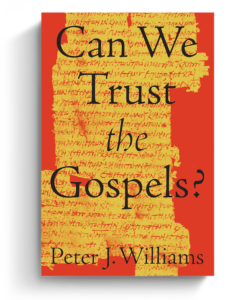 In an age of faith deconstruction and skepticism about the Bible’s authority, it’s common to hear claims that the Gospels are unreliable propaganda. And if the Gospels are shown to be historically unreliable, the whole foundation of Christianity begins to crumble.
In an age of faith deconstruction and skepticism about the Bible’s authority, it’s common to hear claims that the Gospels are unreliable propaganda. And if the Gospels are shown to be historically unreliable, the whole foundation of Christianity begins to crumble.Kathleen Nielson is an author and speaker who loves working with women in studying the Scriptures. She has taught literature (PhD, Vanderbilt University), directed women’s Bible studies in local churches, and served as director of The Gospel Coalition’s women’s initiatives from 2010 to 2017. She and her husband, Niel, make their home partly in Wheaton, Illinois, and partly in Jakarta, Indonesia, where Niel helps lead a network of Christian schools and universities. They have three sons, three daughters-in-law, and nine grandchildren.








